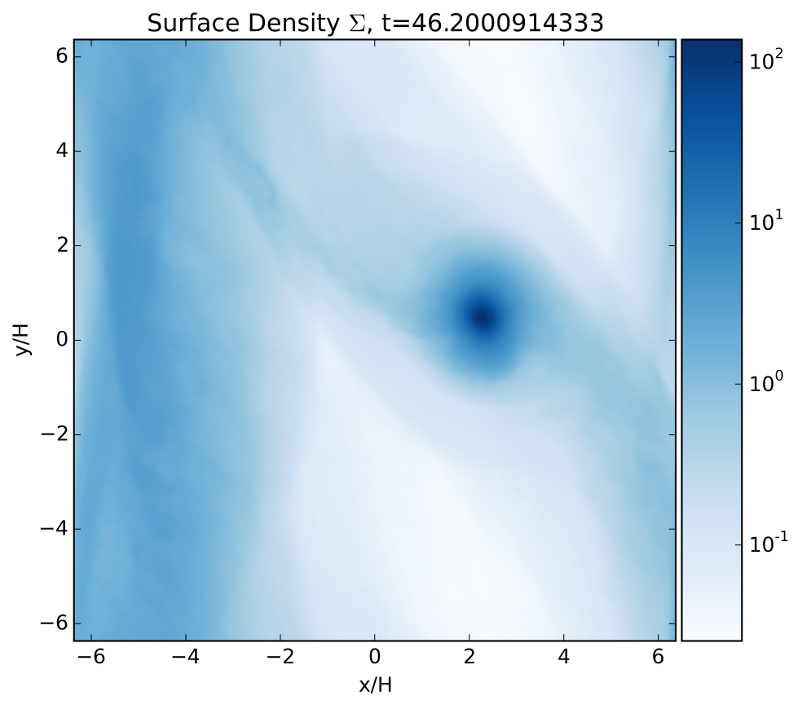
|
EPoS |
|
EPoS Contribution
|
|
Formation of Stellar Companions through Disk Fragmentation
Hans Baehr MPIA, Heidelberg, DE | |
| Massive circumstellar disks are prone to self-gravitational fragmentation, forming dense gas clumps at wide orbital separations. These clumps are often assumed to be early gas giant planets, but subsequent migration through the disk and accretion could result in the formation of stellar mass companions. In our recent simulations of fragmenting disks, we confirm the standard disk fragmentation criteria, which puts fragmentation in the cool outer regions of the disk. We also find that at formation fragments are at least several Jupiter masses, but likely an order of magnitude larger, approaching low-mass star masses, helping to explain the low mass companions found at 100-400 au in binary systems. | |
 | |
| Caption: A fragment formed in our simulations. At a orbital distance of 100 au, this object has a mass of at least 15 Jupiter masses. | |
| Collaborators: H. Klahr, MPIA, DE K.M. Kratter, SO, US |
Key publication
Suggested Session: Protostellar disks |